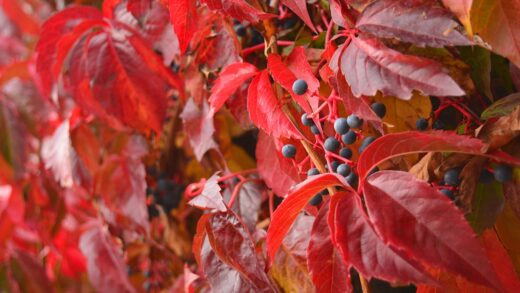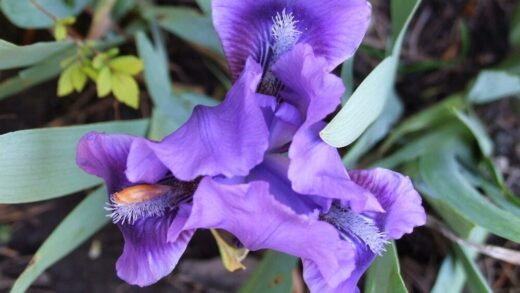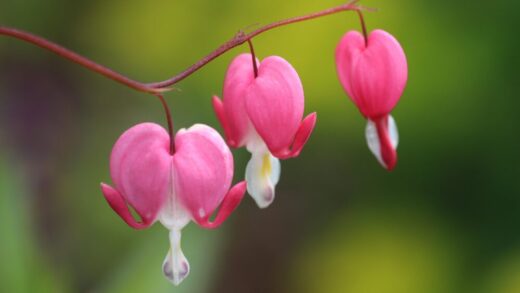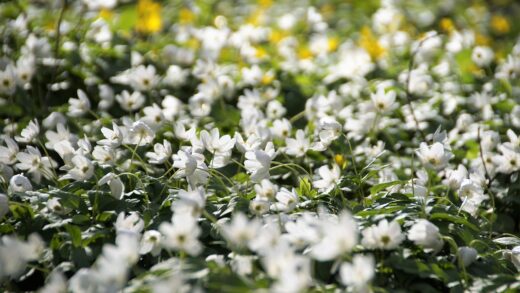Biting stonecrop is a remarkably robust and resilient plant, known for its ability to thrive in tough conditions with minimal care, which extends to its resistance to most diseases and pests. In a proper growing environment characterized by full sun and sharply draining soil, this succulent is rarely troubled by health issues. Most problems that do arise are not caused by inherent susceptibility but are rather the direct result of suboptimal cultural conditions, with excessive moisture and poor air circulation being the primary culprits. Therefore, the first and most effective line of defense against any potential ailment is prevention through correct planting and maintenance practices.
The dense, mat-forming growth habit of biting stonecrop, while beautiful, can create a microclimate at the soil level that traps humidity if the plant is not in an open, airy location. This trapped moisture, especially when combined with overwatering or heavy, water-retentive soil, creates the perfect breeding ground for fungal pathogens. Consequently, the most common diseases to affect this plant are fungal in nature, specifically root rot and crown rot, which attack the plant’s foundation and can be fatal if not addressed.
Pest infestations are relatively uncommon, as the plant’s succulent foliage does not appeal to a wide range of insects. However, stressed plants are always more vulnerable, and common garden pests like aphids or mealybugs may occasionally take advantage of a plant weakened by poor growing conditions. These pests are typically a secondary problem, and their presence should prompt an assessment of the plant’s overall environment to address the root cause of its stress.
This article will detail the most prevalent diseases and pests that can affect biting stonecrop, with a strong emphasis on prevention as the primary strategy. We will explore how to identify the early symptoms of common problems, from fungal rots to insect pests, and discuss effective, integrated management techniques to resolve them. By understanding these potential challenges and how they relate to the plant’s environment, gardeners can ensure their biting stonecrop remains a healthy and vibrant feature in their landscape.
General resilience and prevention strategies
The innate toughness of biting stonecrop is its greatest asset in resisting diseases and pests. This plant has evolved to withstand harsh environmental stressors, which has endowed it with a natural resilience that makes it an exceptionally low-maintenance choice. The key to leveraging this natural vigor is to provide it with growing conditions that align with its adaptations. By mimicking its preferred habitat, you minimize stress on the plant, making it far less susceptible to attack from pathogens and pests.
More articles on this topic
The single most important preventative measure is ensuring proper drainage. This cannot be overstated. Biting stonecrop’s greatest vulnerability is to root and crown rot, both of which are caused by fungi that thrive in waterlogged soil. Planting in a gritty, sandy, or gravelly medium, or heavily amending clay soils with inorganic materials, is non-negotiable for the long-term health of the plant. Raised beds or rock gardens are ideal as they naturally provide the sharp drainage this succulent requires.
Adequate sun exposure and air circulation are also critical components of a robust prevention strategy. A location with at least six hours of direct sun helps to keep the foliage and the soil surface dry, making the environment less hospitable to fungal spores. Good air movement around the plant helps to reduce humidity within its dense mat of leaves, further inhibiting the development of fungal diseases. Avoid planting it in crowded beds where air cannot circulate freely or in perpetually damp, shady corners of the garden.
Finally, proper watering hygiene is essential. As established plants are extremely drought-tolerant, it is crucial to err on the side of underwatering. Always allow the soil to dry out completely between waterings, and when you do water, apply it to the soil at the base of the plant, not over the top of the foliage. A healthy, properly sited, and correctly watered biting stonecrop is a fortress against most common garden ailments.
Fungal diseases
Fungal diseases are the most significant threat to biting stonecrop, and they are almost always linked to excess moisture in the soil or on the foliage. The most common and destructive of these is root rot, caused by various soil-borne fungi like Phytophthora and Pythium. This disease attacks the root system, causing it to decay and lose its ability to absorb water and nutrients. Above ground, the symptoms manifest as stunted growth, yellowing or browning leaves, and a general wilting or collapse of the plant, even when the soil is wet.
More articles on this topic
Crown rot is a similar issue that affects the base of the plant where the stems meet the soil line (the crown). The crown becomes soft, mushy, and often turns black or brown. The stems will easily detach from the rotted base. This condition is particularly prevalent when the plant is buried too deeply, or when mulch is piled up against its crown, trapping moisture. Both root and crown rot are extremely difficult to treat once they have taken hold, making prevention the only truly effective strategy.
If you detect the early stages of rot, immediate action is required. Carefully excavate the affected plants and trim away all diseased, dark, and mushy tissue with a sterilized knife or pruning shears. If any healthy portions with firm, white roots and stems remain, they can be treated with a fungicide and replanted in a new location with much-improved drainage. The contaminated soil from the original location should be removed and discarded to prevent the spread of the fungal pathogens.
Less common, but still possible in very humid conditions, are foliar fungal diseases like powdery mildew. This appears as a white, dusty coating on the leaves and stems. While it is not typically fatal to biting stonecrop, it is unsightly and can weaken the plant over time. Improving air circulation by thinning out dense patches or removing overgrown surrounding plants can help. In persistent cases, a horticultural oil or a fungicide specifically formulated for powdery mildew can be applied.
Common insect pests
Biting stonecrop’s resistance extends to most insect pests, but it is not entirely immune, especially if the plant is under stress from poor growing conditions. Aphids are one of the more common pests that might appear. These small, pear-shaped insects typically cluster on new growth and flower stems, sucking sap from the plant. A small infestation is usually not a cause for concern, but a large population can cause distortion of new growth and a decline in vigor.
Managing aphids is often simple. A strong jet of water from a garden hose can be enough to dislodge them from the plants. For more stubborn infestations, spraying with insecticidal soap is an effective, low-impact solution. Encouraging natural predators like ladybugs, lacewings, and hoverflies into your garden by planting a diversity of flowering plants will also provide excellent long-term, natural aphid control.
Mealybugs and scale insects are other sap-sucking pests that can occasionally be found on biting stonecrop, often hiding in the dense foliage near the crown of the plant. Mealybugs appear as small, white, cottony masses, while scale insects look like small, immobile bumps on the stems. Both can be controlled by dabbing the individual pests with a cotton swab soaked in rubbing alcohol, which dissolves their protective waxy coating. Horticultural oil sprays can also be effective, as they smother the insects.
It is important to inspect your plants regularly, especially if they seem to be struggling, as early detection makes any pest problem much easier to manage. When you do find pests, always try the least toxic control methods first. A healthy plant in the right environment can often withstand a minor pest presence without any intervention at all, as natural predators will typically move in to control the population.
Integrated pest management techniques
Integrated Pest Management (IPM) is a holistic approach that prioritizes the long-term prevention of pests and diseases through a combination of techniques, rather than relying solely on chemical treatments. For a plant like biting stonecrop, an IPM strategy aligns perfectly with its needs, as it focuses on creating a healthy, balanced garden ecosystem. The foundation of IPM is cultural control, which involves selecting the right plant for the right place and maintaining its health through proper care—exactly the preventive measures we have already discussed.
The next level of IPM is mechanical and physical control. This includes actions like hand-picking larger pests like slugs and snails, setting traps, or using physical barriers. For biting stonecrop, this could involve creating a ring of diatomaceous earth around a patch to deter crawling pests or using a strong spray of water to knock aphids off the stems. It also includes the crucial practice of removing and destroying any diseased plant material to prevent pathogens from spreading.
Biological control is another key component of IPM. This involves using living organisms to control pests. This can be as simple as fostering a welcoming environment for natural predators like birds, beneficial insects, and spiders. Planting a variety of nectar- and pollen-rich flowers nearby can attract ladybugs and hoverflies that prey on aphids. This creates a self-regulating system where pest populations are kept in check naturally.
The final resort in an IPM program is the responsible use of chemical controls, such as pesticides and fungicides. For biting stonecrop, this should be an absolute last resort. If chemical intervention is deemed necessary, choose the least toxic option available, such as insecticidal soap or horticultural oil, and apply it carefully according to the label directions, targeting only the affected areas to minimize harm to beneficial insects and the surrounding environment.


















